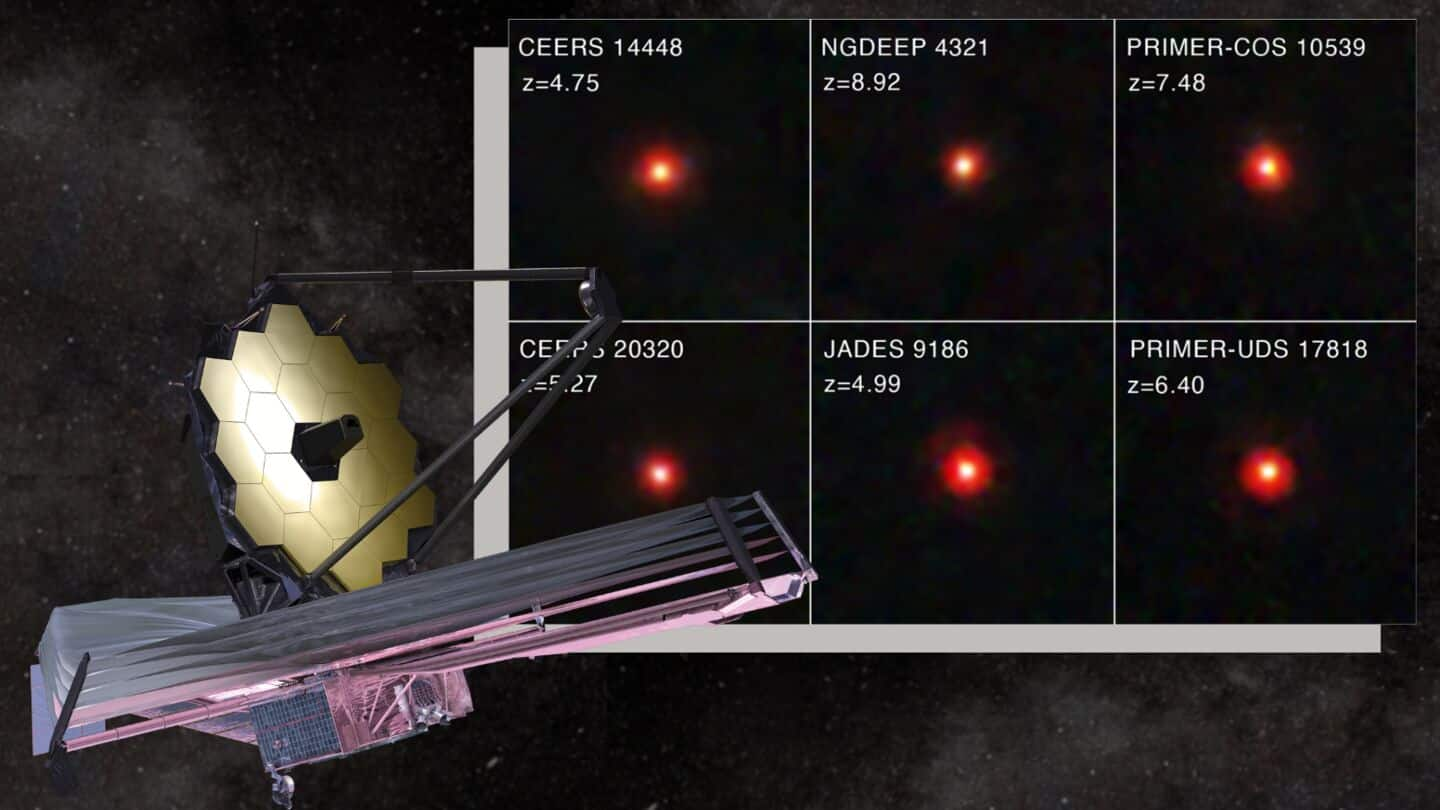
JWST's 'little red dots' could be black hole nurseries
What's the story
The James Webb Space Telescope (JWST) has been studying the early universe since its first observations. In December 2022, JWST spotted several "little red dots" (LRDs) in its survey of ancient galaxies. While most scientists believe these are compact, primordial galaxies, their exact nature and why they're so red remain hotly debated. Now, a new study suggests that LRDs could be supermassive black hole (SMBH) factories.
Theories
Two main theories on LRDs
The debate over the nature of LRDs revolves around two main theories. The "stellar-only" hypothesis suggests these objects are red because they are full of stars and dust, much like modern-day "dusty galaxies." The other theory, "MBH and galaxy," proposes that LRDs are early examples of active galactic nuclei (AGNs) found throughout the universe today. Both models have major implications for how these galaxies evolved into more recent types.
Research findings
How LRDs could lead to SMBH formation
A recent study led by Andres Escala from the Universidad de Chile begins with the "stellar-only" hypothesis but also considers how LRDs could evolve to fit the "MBH and galaxy" interpretation. The team proposes that LRDs began as star-forming, dusty galaxies with extremely dense core regions. This theory explains their compactness and redness, two defining features of LRDs. However, the widths of their hydrogen spectral line emissions suggest velocity dispersions much higher than those seen in early galaxies, which could lead to long-term instability.
Evolutionary theory
Evolution from stellar-only to MBH galaxy
Escala and his team suggest that LRDs could evolve from stellar-only galaxies to more complex structures with supermassive black holes at their centers. This theory would explain the lack of X-ray emissions from most LRDs, unlike quasars in the later universe. The researchers also note that these objects only appear between redshifts z=8 and 4, suggesting they can only be observed in their early stages before evolving into systems similar to those seen at lower redshifts.
Black hole potential
Implications for cosmology and galactic evolution
The study's authors argue that LRDs are likely the most favorable sites for MBH formation. They suggest that even if these systems are only made of stars, such a stellar system cannot be stable (at least in its inner regions) and would inevitably tend to form MBHs. This theory provides a more complete picture of Webb's early universe observations and could have major implications for our understanding of cosmology and galactic evolution.